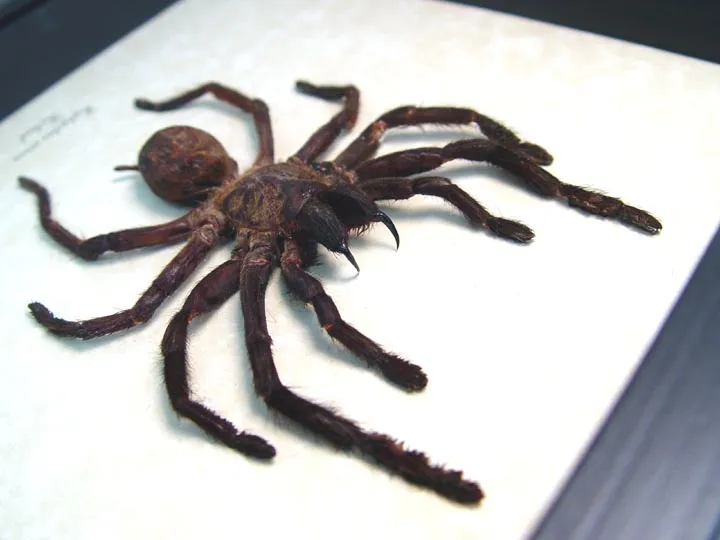Understanding the Haplopelma Tarantula
The Haplopelma tarantula, often captivating and sometimes intimidating, is a fascinating creature that has gained popularity as a pet for both novice and experienced keepers. This guide will delve into the intricacies of Haplopelma tarantula care, offering comprehensive insights to ensure a thriving and healthy life for these beautiful arachnids. Understanding the specific needs of Haplopelma species is the first step to becoming a successful tarantula keeper. This guide provides everything you need to know about these amazing spiders. This comprehensive guide covers everything from habitat setup and feeding to handling and health, so you can provide the best possible care for your Haplopelma tarantula. Whether you’re a beginner or an experienced keeper, this guide offers valuable insights and practical advice to ensure the well-being of your tarantula.
Haplopelma Tarantula Species Overview
The genus Haplopelma includes several species, each with unique characteristics. These tarantulas are known for their striking appearance and terrestrial lifestyle. They are burrowing tarantulas, meaning they spend a significant amount of time underground. Known for their defensive behaviors, understanding their natural environment is crucial for providing proper care. Common species include Haplopelma hainanum and Haplopelma longipes, each with its distinct coloration and temperament. Habitat size, substrate type, and environmental parameters vary slightly among species, so researching the specific needs of your tarantula is crucial. Before acquiring a Haplopelma tarantula, it is essential to identify its species to meet its specific needs, ensuring a happy and healthy life.
Identifying Haplopelma Species
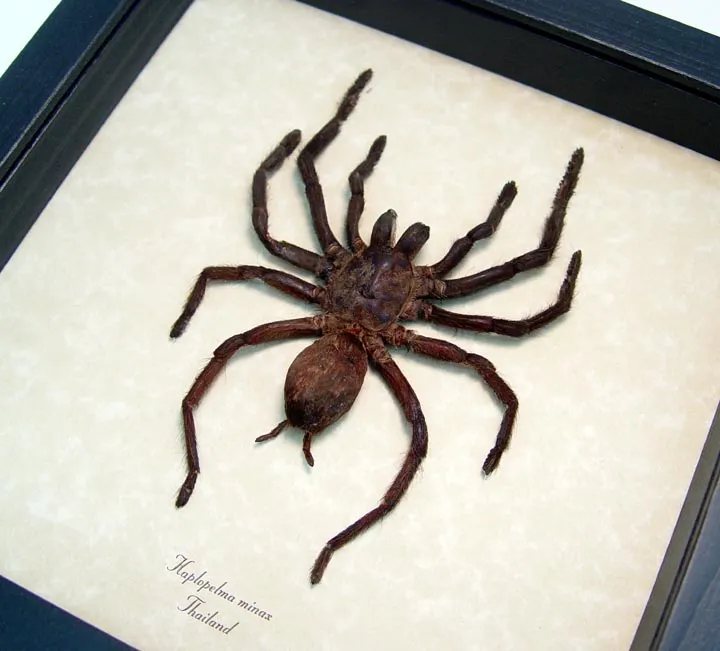
Accurately identifying a Haplopelma species is vital for providing tailored care. Visual characteristics like leg coloration, carapace patterns, and overall size help distinguish between species. Consulting identification guides, online resources, and experienced keepers can aid in accurate species identification. Detailed images and descriptions help in comparing your tarantula to known species. If possible, consider examining your tarantula under appropriate lighting conditions, to observe its colors better. Proper identification ensures you can meet the unique needs of your tarantula, leading to a longer and healthier life. Note that accurate identification may be challenging for beginners, so seeking expert advice is recommended.
Setting Up a Haplopelma Tarantula Habitat
Creating a suitable habitat is paramount for the well-being of a Haplopelma tarantula. A well-designed enclosure replicates its natural environment, providing the necessities for survival. Key aspects include choosing the right enclosure, selecting suitable substrate, and controlling temperature and humidity. Providing essential accessories further enhances the environment, promoting optimal health and minimizing stress. With the right set up, a Haplopelma tarantula can thrive, displaying its natural behaviors in a comfortable environment. Attention to detail during habitat setup is an investment in your tarantula’s health and longevity, offering an enriching experience for both you and your pet.
Choosing the Right Enclosure
The enclosure should be appropriately sized for the tarantula. A general rule is to provide a space that is at least three times the tarantula’s leg span. Ventilation is crucial, so the enclosure should have adequate airflow to prevent the buildup of mold and maintain air quality. Secure lids are essential to prevent escapes, especially as tarantulas can be surprisingly agile. Consider both the size of the enclosure and the tarantula’s burrowing habits. A terrestrial setup benefits from a horizontal enclosure, allowing for ample ground space. Transparent enclosures, such as glass or acrylic, enable easy observation of the tarantula. Avoid enclosures with sharp edges or features that could potentially harm the tarantula. Choosing the right enclosure is an important decision to ensure the safety and comfort of your Haplopelma.
Substrate Selection and Depth
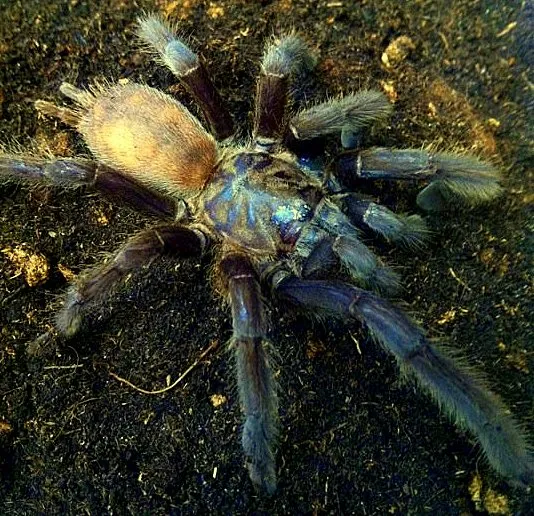
Substrate plays a crucial role in the well-being of a Haplopelma tarantula. The primary function of the substrate is to allow the tarantula to burrow. A mix of peat moss, vermiculite, and coco fiber provides excellent burrowing and moisture-retention capabilities. The depth of the substrate should be several inches deep, to accommodate the tarantula’s burrowing behavior. Avoid substrates that are toxic or irritating to the tarantula. Ensure the substrate remains slightly moist, but not saturated, which can lead to mold. Regular spot cleaning helps maintain substrate health and prevents the buildup of waste products. The right substrate provides a natural environment for your tarantula, allowing it to thrive and exhibit its natural behaviors.
Temperature and Humidity Control
Maintaining appropriate temperature and humidity levels is crucial for the health of Haplopelma tarantulas. The ideal temperature range is typically between 75-85°F (24-29°C). Use a thermostat and heat source, such as a heat mat placed on the side of the enclosure, to maintain the desired temperature. Humidity levels should be maintained between 60-70%. Use a hygrometer to measure humidity. Regular misting of the enclosure helps maintain humidity. Avoid extreme temperature fluctuations, as these can stress the tarantula. Proper temperature and humidity management helps simulate the tarantula’s natural environment, promoting health and well-being.
Essential Habitat Accessories
Providing essential accessories enhances the living environment. A water dish should always be available, providing fresh water at all times. Hides, such as cork bark or artificial hides, offer secure retreats, reducing stress and allowing the tarantula to feel safe. Decorating the enclosure with non-toxic plants adds aesthetic value and offers additional hiding places. Ensure that all accessories are securely placed and cannot fall or harm the tarantula. Regular cleaning and maintenance of accessories help maintain hygiene. The right accessories create a stimulating and comfortable environment for the Haplopelma tarantula.
Feeding Your Haplopelma Tarantula

Proper feeding is crucial for the health and growth of a Haplopelma tarantula. The diet should consist primarily of live insects, with occasional supplements. Proper feeding techniques will ensure your tarantula gets the nutrients it needs, contributing to its overall health. Understanding the tarantula’s dietary needs and feeding frequency are key factors. Avoid overfeeding and provide fresh water to keep your pet happy. The guidelines provided will assist you in providing proper nutrition to your Haplopelma.
What to Feed Your Tarantula
The main diet should consist of insects appropriate for their size, such as crickets, mealworms, and roaches. The insects should be gut-loaded with nutritious foods before feeding them to the tarantula. Avoid feeding wild-caught insects, as they may carry parasites or pesticides. Variety in the diet can provide a broader range of nutrients. Dusting insects with calcium and vitamin supplements can ensure adequate nutrition. The correct insect selection is an essential part of a Haplopelma’s diet. Ensure your tarantula has access to a diverse and nutritious food source.
Feeding Frequency and Portion Sizes
Feeding frequency depends on the tarantula’s age and size. Young tarantulas should be fed more frequently than adults. Overfeeding can lead to health problems, such as obesity. The tarantula will typically eat when hungry and refuse food when it is not. Remove any uneaten insects within 24 hours to maintain hygiene. Observe your tarantula’s abdomen; a well-fed tarantula has a rounded abdomen. Adjusting the feeding frequency based on the tarantula’s appetite ensures optimal health and growth.
Watering and Hydration

Providing fresh water is essential. Use a shallow water dish appropriate for the tarantula’s size. Replace water regularly to prevent contamination. The water dish should always be accessible. Misting the enclosure can also provide hydration, especially during molting. Ensure that the substrate is slightly moist, but not waterlogged. Proper hydration is critical for the tarantula’s health and well-being.
Handling and Safety Precautions
While Haplopelma tarantulas are often considered defensive, it is crucial to approach handling with caution and respect. Handling should be minimized as it can stress the tarantula. If you must handle your tarantula, knowing the correct techniques can minimize risk and maximize safety. By understanding the potential risks, you can take appropriate precautions to keep yourself and your tarantula safe. These safety measures will help you to have a successful and safe experience.
Safe Handling Techniques
Handling should be done only when necessary, such as during enclosure maintenance or health checks. Always approach the tarantula slowly and gently, never surprising it. Use a soft brush or a similar tool to gently encourage the tarantula to move onto a secure surface. Avoid sudden movements, as they can startle the tarantula. Supervise children closely when they are near the tarantula. If the tarantula appears agitated, stop handling immediately. If the tarantula bites, seek medical attention. Safe handling requires patience, a calm demeanor, and an understanding of the tarantula’s behavior.
Understanding Tarantula Bites
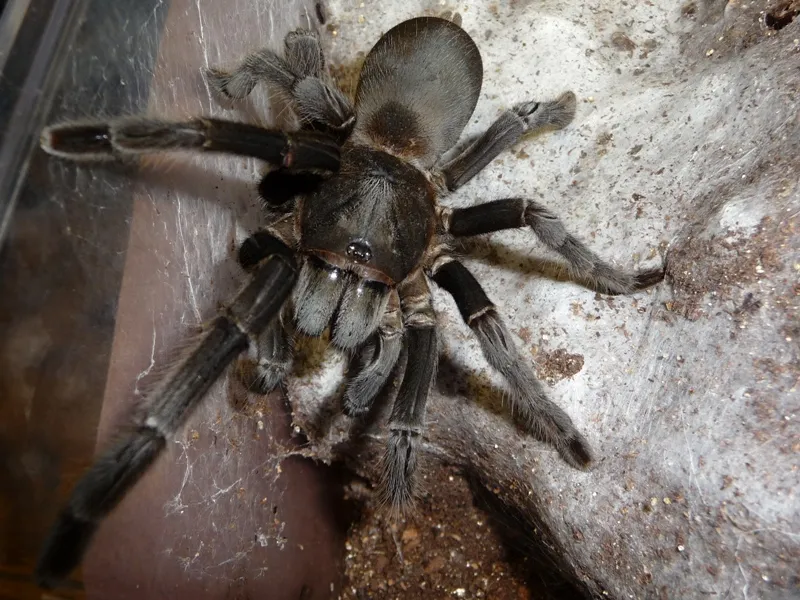
Tarantula bites can occur when the tarantula feels threatened or provoked. Haplopelma tarantulas are known to be more defensive than some other species. While their venom is generally not lethal to humans, bites can be painful and cause local reactions such as redness, swelling, and itching. In rare cases, allergic reactions may occur. If bitten, clean the bite area thoroughly with soap and water. Monitor the bite for signs of infection. Seek medical attention if severe symptoms develop. Understanding the potential risks of bites helps you take the necessary precautions to protect yourself.
Common Health Issues and Solutions
Like all animals, Haplopelma tarantulas can experience health issues. Recognizing and addressing these issues promptly is crucial for their well-being. Understanding the common health problems and their solutions will help keep your tarantula healthy. Regular observation of your tarantula will help detect any signs of illness or distress. Early detection of issues and prompt treatment can greatly improve the tarantula’s prognosis and quality of life. Maintaining a clean and appropriate environment will keep your pet healthy.
Identifying and Treating Mites
Mites are tiny parasites that can infest tarantulas, causing irritation and potentially harming the spider. Identifying mites involves looking for small, moving specks on the tarantula or in the enclosure. Symptoms include the tarantula appearing restless, and the presence of visible mites. To treat mites, isolate the affected tarantula from other tarantulas. Improve ventilation in the enclosure and replace the substrate. You can also use mite treatments specifically designed for tarantulas, following the instructions carefully. Thorough cleaning of the enclosure and accessories is essential to eliminate the infestation. Regular monitoring and preventative measures can prevent mite infestations.
Dealing with Molting Problems
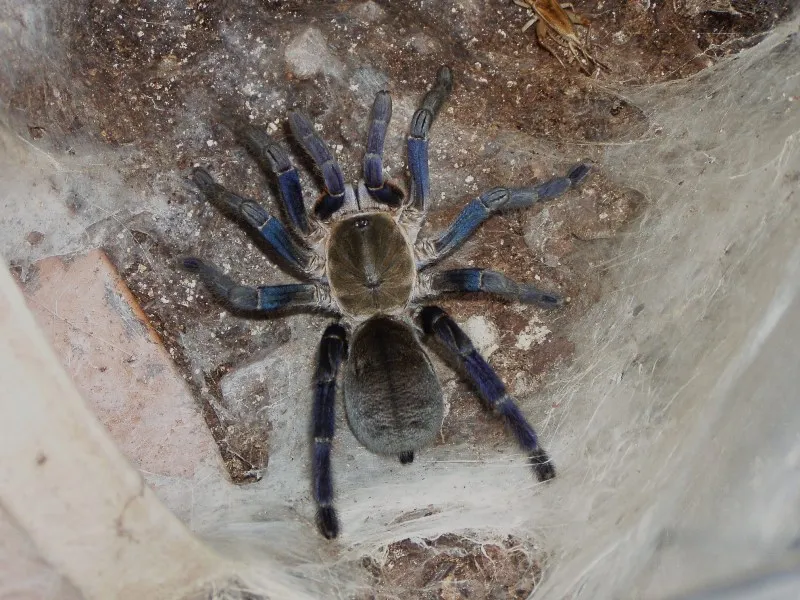
Molting is a natural process where the tarantula sheds its exoskeleton to grow. Providing a suitable environment during molting is vital. Problems can arise if humidity is too low, making molting difficult. Create a humid environment and ensure the substrate is slightly moist. Avoid disturbing the tarantula during molting. If the tarantula struggles to molt, seek advice from an experienced tarantula keeper or veterinarian. Do not attempt to assist a tarantula during molting unless you have experience. A healthy and well-cared-for tarantula will generally molt successfully. It is a process of growth and renewal.
Breeding and Reproduction
Breeding Haplopelma tarantulas can be a rewarding experience, but it requires knowledge and preparation. Successfully breeding these tarantulas demands a good understanding of their life cycle. Understanding the intricacies of breeding and reproduction ensures a successful outcome, promoting the conservation and appreciation of these animals. Proper research and preparation before you begin the breeding process are key.
Sexing Your Haplopelma Tarantula
Sexing a tarantula is essential before breeding. The most common method is to examine the underside of the tarantula for the presence of spermathecae in females. The presence of tibial hooks on the male’s front legs is another key identifier. Examining the exuviae (molted skin) can provide clues. It is usually easier to determine the sex after the tarantula has undergone several molts. Using a magnifying glass can help in careful examination. Correctly identifying the sex is crucial to successful breeding.
Mating and Egg Sacs
Mating Haplopelma tarantulas can be complex. Introduce the male to the female’s enclosure carefully and monitor their behavior closely. If the female is receptive, mating will occur, which involves the transfer of sperm by the male. After mating, separate the male from the female to prevent the female from attacking and eating the male. The female will then produce an egg sac, which she will guard. Provide the female with a suitable environment for egg sac incubation, including appropriate humidity and temperature. The egg sac will contain many spiderlings. The process requires patience and careful monitoring to ensure a successful outcome.
Conclusion
Caring for a Haplopelma tarantula can be a very enriching experience. By following these guidelines, you can provide the best possible care for your tarantula, ensuring its health and longevity. From setting up a proper habitat to understanding their unique needs, a well-informed keeper can provide a happy and thriving environment. The key to successful care is research, observation, and a commitment to providing a natural and enriching environment. With patience and dedication, you can enjoy the fascinating world of Haplopelma tarantulas. Remember, responsible tarantula ownership starts with a deep understanding of the species and its needs.
